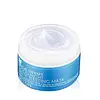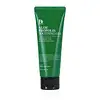What's inside
What's inside
 Key Ingredients
Key Ingredients

 Benefits
Benefits

 Concerns
Concerns

No concerns
 Ingredients Side-by-side
Ingredients Side-by-side

Water
Skin ConditioningDimethicone
EmollientCyclomethicone
EmollientNiacinamide
SmoothingButylene Glycol
HumectantAlcohol Denat.
AntimicrobialPolysorbate 20
EmulsifyingGlycerin
HumectantSodium Hyaluronate
HumectantPolyacrylate-13
Polyisobutene
Caprylyl Glycol
EmollientEthylhexylglycerin
Skin ConditioningTropolone
Skin ConditioningTriethanolamine
BufferingCarbomer
Emulsion StabilisingTrehalose
HumectantSclerotium Gum
Emulsion StabilisingBroussonetia Kazinoki Callus Culture Extract
Skin ConditioningMorus Alba Bark Extract
Skin ConditioningPantethine
EmollientPlacental Protein
HumectantNatto Gum
Biosaccharide Gum-1
HumectantDisodium EDTA
CI 17200
Cosmetic ColorantCI 42090
Cosmetic ColorantParfum
MaskingWater, Dimethicone, Cyclomethicone, Niacinamide, Butylene Glycol, Alcohol Denat., Polysorbate 20, Glycerin, Sodium Hyaluronate, Polyacrylate-13, Polyisobutene, Caprylyl Glycol, Ethylhexylglycerin, Tropolone, Triethanolamine, Carbomer, Trehalose, Sclerotium Gum, Broussonetia Kazinoki Callus Culture Extract, Morus Alba Bark Extract, Pantethine, Placental Protein, Natto Gum, Biosaccharide Gum-1, Disodium EDTA, CI 17200, CI 42090, Parfum
Aloe Barbadensis Leaf Juice 80%
Skin ConditioningPropolis Extract
Skin ConditioningPentylene Glycol
Skin ConditioningButylene Glycol
Humectant1,2-Hexanediol
Skin ConditioningGlycerin
HumectantAloe Barbadensis Leaf Extract
EmollientBetaine
HumectantWater
Skin ConditioningPortulaca Oleracea Extract
Skin ConditioningAllantoin
Skin ConditioningHouttuynia Cordata Extract
Skin ConditioningPsidium Guajava Fruit Extract
AstringentSchisandra Chinensis Fruit Extract
Skin ConditioningPerilla Ocymoides Leaf Extract
TonicAcorus Calamus Root Extract
PerfumingCitrus Paradisi Fruit Extract
Skin ConditioningCaprylyl Glycol
EmollientAcrylates/C10-30 Alkyl Acrylate Crosspolymer
Emulsion StabilisingArginine
MaskingAloe Barbadensis Leaf Juice 80%, Propolis Extract, Pentylene Glycol, Butylene Glycol, 1,2-Hexanediol, Glycerin, Aloe Barbadensis Leaf Extract, Betaine, Water, Portulaca Oleracea Extract, Allantoin, Houttuynia Cordata Extract, Psidium Guajava Fruit Extract, Schisandra Chinensis Fruit Extract, Perilla Ocymoides Leaf Extract, Acorus Calamus Root Extract, Citrus Paradisi Fruit Extract, Caprylyl Glycol, Acrylates/C10-30 Alkyl Acrylate Crosspolymer, Arginine
 Reviews
Reviews

Ingredients Explained
These ingredients are found in both products.
Ingredients higher up in an ingredient list are typically present in a larger amount.
Butylene Glycol (or BG) is used within cosmetic products for a few different reasons:
Overall, Butylene Glycol is a safe and well-rounded ingredient that works well with other ingredients.
Though this ingredient works well with most skin types, some people with sensitive skin may experience a reaction such as allergic rashes, closed comedones, or itchiness.
Learn more about Butylene GlycolCaprylyl Glycol is a humectant and emollient, meaning it attracts and preserves moisture.
It is a common ingredient in many products, especially those designed to hydrate skin. The primary benefits are retaining moisture, skin softening, and promoting a healthy skin barrier.
Though Caprylyl Glycol is an alcohol derived from fatty acids, it is not the kind that can dry out skin.
This ingredient is also used as a preservative to extend the life of products. It has slight antimicrobial properties.
Learn more about Caprylyl GlycolGlycerin is already naturally found in your skin. It helps moisturize and protect your skin.
A study from 2016 found glycerin to be more effective as a humectant than AHAs and hyaluronic acid.
As a humectant, it helps the skin stay hydrated by pulling moisture to your skin. The low molecular weight of glycerin allows it to pull moisture into the deeper layers of your skin.
Hydrated skin improves your skin barrier; Your skin barrier helps protect against irritants and bacteria.
Glycerin has also been found to have antimicrobial and antiviral properties. Due to these properties, glycerin is often used in wound and burn treatments.
In cosmetics, glycerin is usually derived from plants such as soybean or palm. However, it can also be sourced from animals, such as tallow or animal fat.
This ingredient is organic, colorless, odorless, and non-toxic.
Glycerin is the name for this ingredient in American English. British English uses Glycerol/Glycerine.
Learn more about GlycerinWater. It's the most common cosmetic ingredient of all. You'll usually see it at the top of ingredient lists, meaning that it makes up the largest part of the product.
So why is it so popular? Water most often acts as a solvent - this means that it helps dissolve other ingredients into the formulation.
You'll also recognize water as that liquid we all need to stay alive. If you see this, drink a glass of water. Stay hydrated!
Learn more about Water